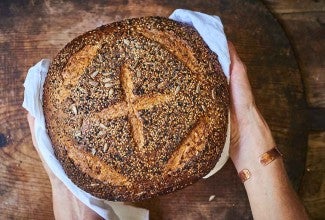How to coat your bread with seeds, oats, and other crust treatments
And make sure they stick.
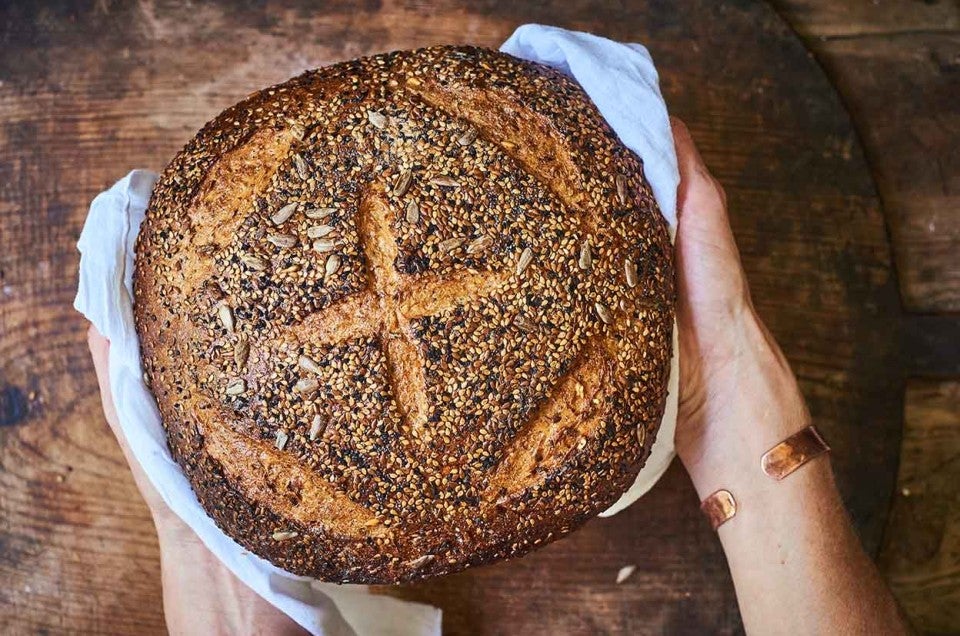

I love a bread that’s fully encrusted with seeds, oats, rye chops, or bran flakes. Not only is a coated loaf more beautiful, but this “crust treatment” also lends tremendous flavor and texture to your bread. The challenge is how to get those seeds to stick to your loaf so you get full coverage, whether you want to seed just the top or the whole loaf, and how to keep them there so they don’t just fall off later when you’re slicing your bread.
For some breads, you can use an egg wash as the glue; the seeds will stick to it. But not all breads benefit from an egg wash; crusty loaves that bake at a high temperature, for example. In those cases, the best way to get the seeds to stick is simple: Just add water.
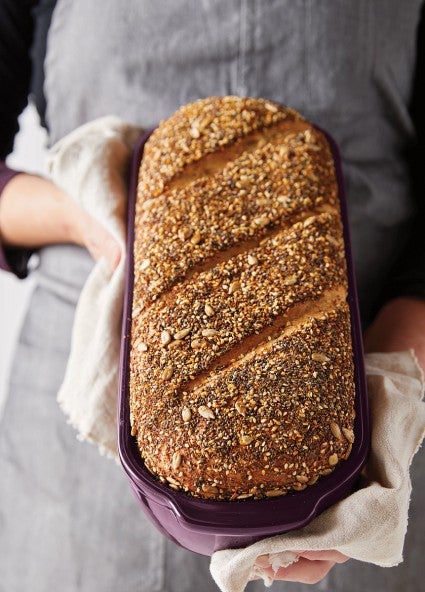
To add a seeded crust to a loaf (or rolls), first thoroughly wet a clean, non-lint kitchen towel, then wring out some of the water, leaving it quite wet to the touch. Spread the towel flat onto a baking sheet or tray. Pour a generous quantity of seeds (or oats, bran flakes, or rye chops – the method works the same way for all of them) in a thick, even layer onto a separate baking tray. You can use a single type, or opt for a mixture.
If you want to seed only the top of your loaf, after shaping your bread, place what will become the top surface of your finished loaf onto the damp kitchen towel, gently rocking it back and forth to moisten.
Then place the moistened portion of the dough onto the seed bed, rocking in a similar fashion to fully coat the loaf with the seeds. Let it sit for a few seconds on the seed bed while the seeds adhere, then place the loaf into your brotform (also known as a banneton) or proofing vessel until baking. If using a brotform, it will be seed-side down; if you’re proofing in the baking vessel, place it seed-side up.
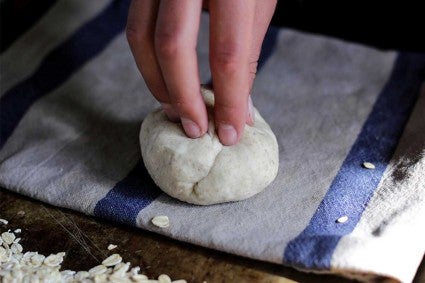
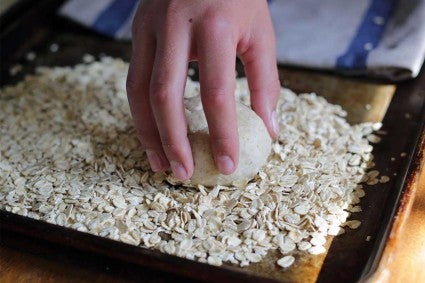
If you want full seed coverage, first shape your bread, then place on the damp kitchen towel and roll so it’s moistened all over before transferring it to your seed tray.
Note that seeding your crust can make your loaf harder to score. Instead of a lame, you might need to use a pair of scissors or a serrated knife instead. Another risk, especially with higher-fat seeds like sunflower and pumpkin, is that the seed crust can burn. To avoid this, use raw, untoasted seeds or nuts (they'll toast as the bread bakes). For super seedy loaves you may also need to drop your oven temperature by 10 to 15°F; increase the bake time as needed until your loaf is a deep brown.
Ready to bake? Give our super-seedy Multigrain Sourdough Boule a try.
Cover photo and food styling by Liz Neily
